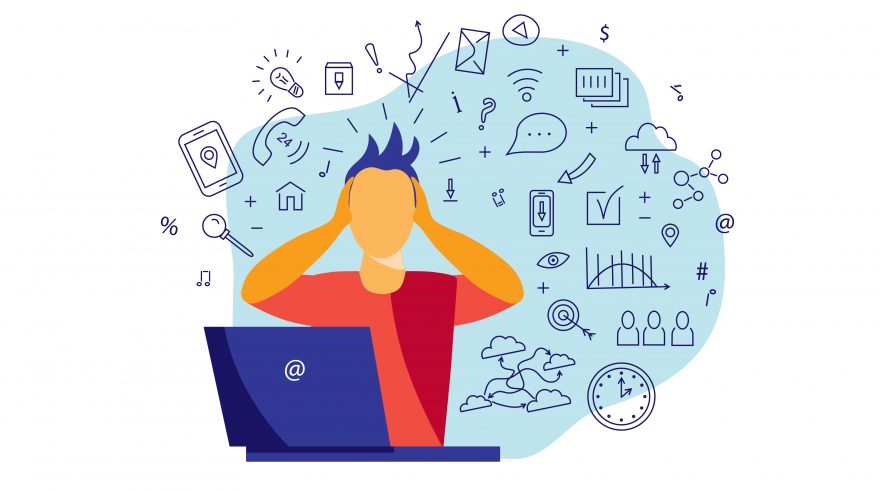4 Ways Schools Can Support Students and Educators as We Return to In-Person Learning

School districts nationwide have done their best to adapt quickly to evolving public health concerns during COVID, while not compromising the safety of students, families, and faculty.
Still, the return to “school” in the form of in-person classes, virtual coursework, and hybrid models has proven no less chaotic than the abrupt transition to virtual learning we experienced last spring. While academic learning and lesson plans are important, our priority when it comes to getting back to school needs to be clear. There is a childhood mental health crisis sitting just under the surface for an entire generation of children who are not getting what they need developmentally, emotionally, and otherwise.
Throughout remote learning, we’ve seen missed opportunities for adults to check in in-person on students’ emotional and mental wellbeing, leading to an inability to prevent violence, suicide surges, or bullying. There’s been a lack of socialization, especially for younger students, meaning missed opportunities to practice the social and emotional skills that come from play that will serve them for a lifetime, such as waiting turns, managing impulses, active listening, and empathizing with others.
Once we return to the classroom at full capacity, students will have a new set of challenges to overcome. Beyond decreased in-person interaction, the racial and economic disparities that the virus presents are also exacerbating the mental health crisis. Children in marginalized communities often experience high frequencies of trauma, grief, and loss.
Schools are the safe havens that provide an escape — and critical supports. Schools provide mental health resources, support for families in crisis, regular hot meals, a safe place to be, and adults who are qualified to care for children’s safety and wellbeing after experiencing trauma. During the pandemic, access to resources has been limited and students’ wellbeing has suffered as a result — even in scenarios where academic gains have not been compromised.
So what can we do? Here are four ways schools can prioritize the mental health of students and educators as we prepare to return to in-person schooling:
- Prioritize deliberate, sequential, evidence-based social-emotional learning programs for students and training for staff. In math and reading we learn the basics first and build on those tools to eventually master more complicated skills. Similarly, we base our social and emotional health on foundational knowledge we are taught as young children, and we continue to strengthen and practice these skills as we grow.
- We have to put on our own oxygen masks prior to taking care of others. Be cognizant of educator wellbeing broadly, and understand the systemic impact this has on students. As we return to classrooms, teachers must be guaranteed access to mental health resources and their own social-emotional support programs, PPE and safety equipment in their classrooms. Longer-term efforts to improve educator wellbeing should include providing benefits like health insurance and a living wage. In too many states, this is not the reality for educators.
- Focus on ways to keep schools open, while protecting public health. In Europe, positive COVID-19 cases continue to rise, but schools remain open with limited incidents of spread. Their prioritization of both the near-term physical health of children as well as their long-term mental and emotional wellbeing is an example that we should emulate here. Recently, the U.S.’s largest school district, New York City, closed in-person learning in an effort to prevent COVID from spreading. Like our friends in Europe, we should instead be prioritizing advancements and protocols that allow school doors to remain open in a way that protects the health and safety of our educators and students.
- Lead with trauma-informed, anti-racist practices. For many school communities, the pandemic has compounded the economic and racial inequalities that affect our children. Trauma-informed, anti-racist practices not only support our students through this challenging year, but build safer, more equitable school communities for all of our children. We can learn from educators like Matthew Portell, principal of Fall-Hamilton Elementary and 2020-21 Elementary School Principal of the Year at Metro Nashville Public Schools, who shared the trauma-informed practices of his school in a recent episode of the Saracast: Conversations in Social Emotional Learning.
As vaccines begin to be distributed, the light at the end of a very long tunnel is finally starting to show. However, it won’t be just this year that looks different for educators, families and students — it will be every year moving forward.
And maybe that’s a good thing. The reality is that our educational system wasn’t built to adequately support educators and students at a time as pivotal as this. In fact, these times have exposed that the system has been lacking for a long time. Let this be a catalyst for us to reprioritize how we think about education and how we can best serve students. The strides that we will need to make to account for the regression of an entire generation are significant, but not insurmountable. There is innovative, effective, life-changing teaching happening right now — but the system as a whole is too rigid to adapt to the 21st century, much less a global pandemic.
We can no longer ignore this, and the work starts now. We owe it to our future generations to make up for lost time and come out of this pandemic working toward a stronger, more innovative, more adaptable education system that supports our youth to navigate life’s inevitable challenges and stressors with resiliency and confidence.
Image by iStock/Getty Images
See also:
